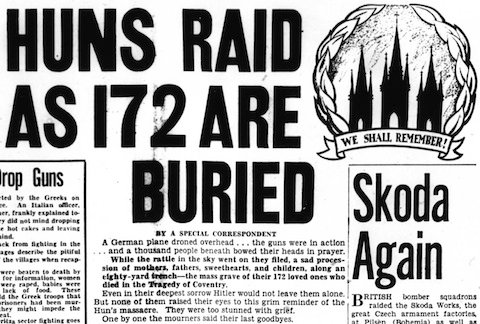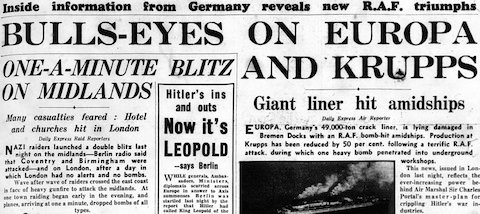[Cross-posted at Cliopatria.]
I know. Writing about Wikipedia is so 2006. And yes, finding errors in Wikipedia articles is not exactly difficult. But I have a bee in my bonnet which needs releasing.
Wikipedia's page on the Blitz has a section entitled 'Commencement on September 6'. This is how it currently reads (sans hyperlinks and superscripts):
There is a misconception that the Blitz started on September 7, 1940. Bombs began dropping the night of September 6 and continued for the full day of the 7th and on into the morning of the 8th. Saturday 7th was the first full day and has officially and erroneously become known as the day the Blitz started. Hermann Göring launched bombers and the first bombs caused damage the night of September 6.
Quoted in the The Manchester Guardian is Göring's communiqué:
Attacks of our Air Force on objectives of special military and economical value in London, which began during the night of September 6, were continued during the day and night of September 7 with exceptionally strong forces using bombs of the heaviest caliber.
A witness recalled the evening of Friday September 6, 1940:
My name is John Davey. I was born on December 27th 1924 in South Moltom [sic - Molton] Road, Custom House, West Ham, and a couple of miles from the Royal Docks. In September 1940, on the Friday evening of the weekend the docks were first blitzed, I was sitting with my friend in his house. At about 7 p.m. there was a series of explosions and the shattering of glass. We ran into the road and saw at the end a flame that shot into the sky, seeming to light up the whole area. My friend and I and lots of others ran towards the fire.
—BBC, WW2 People's War
The first damage to property on September 7 was recorded at eight minutes past midnight, a grocer’s shop at 43 Southwark Park Road, SE16.
It has long been the accepted, but erroneous, view that the London Blitz lasted 57 consecutive nights starting on September 7 1940 and ending November 1. In actuality September 6 makes 57 nights and not September 7. The historian AJP Taylor wrote of such an error:
… it is the fault of previous legends which have been repeated by historians without examination. These legends have a long life.
This is really quite silly. Yes, it's true that the accepted date of 7 September 1940 as the start of the London Blitz is a bit misleading, since there was a non-trivial amount of bombing before that date (e.g. see here). Judging from contemporary press accounts, 7 September certainly seemed to mark an important change in German bombing strategy, but more one of quantity than quality -- almost more an inflection point than a turning point. In retrospect we tend not to see it that way, which is fine. But we could recognise that -- leaving aside the eventual reification involved in the name 'the Blitz' itself -- the 'start of the Blitz' was less clearly defined then than it seems now.
...continue reading →


